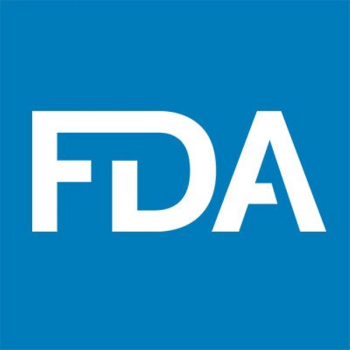
How Wearables Improve Treatments, Boost Patient Experience
Technology professionals shed light on the “Wearable Revolution,” what’s new in wearables, and what the future holds.
Healthcare executives are looking at how consumer- and medical-grade wearables can help improve treatment opportunities and enhance the patient experience.
There will be a 16.7% year-over-year growth across the global wearables market this year, according to Gartner Inc.
With so much growth predicted, Managed Healthcare Executive (MHE) asked the panelists who presented at
Here, Tom Beauregard, chief innovation officer of UnitedHealth Group; John Moore, medical director, Fitbit; and Rosalind Picard, professor, MIT Media Lab and cofounder and chief scientist, Empatica, do just that.
MHE: What is the “Wearable Revolution” and why is it important?
Beauregard: Wearable devices have the potential to fundamentally change how people manage their health, both in terms of preventing disease and helping people more effectively manage chronic conditions. At UnitedHealth Group, we are using wearable devices to motivate people to move more and develop healthy habits, including our UnitedHealthcare Motion wellness program. UnitedHealthcare Motion is available in more than 40 states nationwide and enables people to use wearable devices to earn more than $1,000 per year in rewards by meeting certain daily walking goals. Since the program’s inception, participants have collectively walked more than 180 billion steps and earned nearly $30 million in rewards.
Moore: We are in the midst of transforming consumer-focused devices into digital health tools and have redefined how we think and learn about health and wellness by making technology that was previously only accessible through a lab or clinical experience available on the wrist.
Fitbit’s vision is to make the world healthier and that includes helping healthcare providers better support their patients beyond the walls of the clinical environment. We are working with health plans, researchers, and other healthcare companies to make that vision a reality.
While wearables are critical to driving behavior change, they are not the only piece of the puzzle. Fitbit’s recent acquisition of
We believe we can help build stronger connections between consumers and their care teams by removing some of the most difficult barriers to behavior change. One example is enabling health coaches to be a bridge for healthcare providers beyond the walls of the clinical environment. Wearable devices can provide activity, sleep, and heart rate data, a powerful tool in helping a provider better understand a patient’s full picture of health.
MHE: What’s new in wearables?
Beauregard: One of the latest trends that UnitedHealth Group is driving is integrating human support with data from real-time sources, such as digital health technology, and historical sources, such as claims data. The goal is to help improve and personalize how people navigate the health system.
For instance, we created a pilot program for eligible UnitedHealthcare Medicare Advantage plan participants with diabetes to use Dexcom Mobile Continuous Glucose Monitoring (CGM) System to track their blood glucose levels 24/7, enabling them to understand how their behaviors affect their glucose so they can take appropriate actions. Participants also receive personalized diabetes coaching and an activity tracker to help them understand and act upon the data gathered by the CGM device. Together, these tools empower people with type 2 diabetes to manage glucose levels and can result in increased glucose control, reductions in medications and improved confidence in managing their diabetes.
Moore: Wearables are becoming an important tool within the healthcare sector that can help improve patient engagement and support better health outcomes. With 25 million active Fitbit users, we’ve learned that using data with compelling content to provide insights and personalized guidance, can provide the motivation and engagement that leads to successful behavior change. These changes can transform care from episodic to preventive-leading to better outcomes for people and for our system overall.
More data also gives us a better understanding about health at the individual and population level. There are more than 6.8 million Fitbit users who have connected their data into population health and health management platforms.
Wearable devices are also being used widely within clinical research. An
Picard: FDA has approved the Embrace smartwatch, a wearable device that can track generalized tonic-clonic seizures-sometimes called a grand mal seizure, that involves the entire body-and aid in epilepsy management. Embrace uses advanced AI (advanced machine learning) to monitor for these most dangerous kinds of seizures. It is an example of an AI that is helping save lives today. The Embrace smart watch and AI platform have many other uses, in stress and anxiety disorders, mood disorders and depression, migraine, autism, and more.
In America, one in 26 people will have epilepsy at some point in their life. While risk of death from seizures is rare, more people die in the minutes following a generalized tonic-clonic seizure every year in the U.S. than die in house fires or from SIDS. Death rates are higher if people have seizures when they are alone, for example, at night if they sleep alone. It can be life-saving to arrange for a caregiver who is alerted to come and check on you when you have a seizure. There is a death following a seizure every seven to nine minutes. Embrace can detect these seizures and send an alert to your caregiver.
MHE: Why should wearables be on the radar of healthcare executives?
Beauregard: The wearable device market is expected to nearly quadruple from 118 million units in 2016 to 430 million by 2022, according to market intelligence company Tractica. As a result, healthcare executives must continue to experiment in this space to determine how best to apply these technologies in a healthcare setting.
Picard: Wearables are going to revolutionize how decisions are made in healthcare. Today we rely on questionnaires, known to be inaccurate. Wearables give us objective data.
For example, most decisions in epilepsy treatments are made based on patient self-reports about their seizures. However, for the most dangerous kinds of seizures, even under the best of observation conditions, 50% of them do not get reported. The patient is unconscious. It is almost impossible to report them. Thus, drug efficacy and treatments are today based on very poor information. Improving the data can mean life or death differences for many people, especially if a person is not reporting any seizures, when they are actually having many (usually this is at night when they are missed).
MHE: What does the future hold for wearables?
Beauregard: At UnitedHealth Group, we see a future where wearable health technologies provide real-time biometric feedback, helping people understand the connection between daily micro-behaviors and long-term health, acute and chronic-care management, and healthcare costs. By putting real-time data in peoples’ hands and encouraging them to become more active and engaged, we are helping people take charge of their health and pursue their fitness goals.
Moore: What we’re seeing today is just the tip of the iceberg. There is an enormous opportunity to help people better understand their health and wellness, and drive behavior change that leads to better health outcomes. In the future, sensor technology will be able to track even more critical health metrics. At Fitbit, we continue to explore new forms of detection and continue to develop best-in-class health and wellness sensors on the wrist. Two areas we are currently exploring are atrial fibrillation and sleep apnea.
In addition, Fitbit recently announced a new female health tracking feature that can track menstrual cycles and symptoms along with other health and fitness stats in one place on the Fitbit app, providing women with a more holistic view of their overall health and wellness. This could potentially create one of the largest databases of female health data-which may help develop personalized insights and predictive algorithms in the future.
The regulatory environment is also evolving, evidenced by the FDA’s innovative
Picard: At MIT, using wearables and smartphone data, with advanced AI algorithms built at the MIT Media Lab, we are now able to not only detect and recognize important changes in healthy young adults related to their stress and mood, but we are also able to forecast how they will change tomorrow night.
Imagine if your wearable can accurately forecast that your mood is 30% likely to get worse, and your stress 20% likely to get worse tomorrow if you keep doing what you’re doing, but also that you can change this “health weather forecast” by following a few evidence-based personalized suggestions. It could recommend what, for you, is most likely to work-perhaps changing this afternoon's meeting to a walking meeting outdoors, calling a good friend while you're both sitting in traffic, and going to bed two hours earlier. While it won't be perfect-no weather forecast is-it could use your data to help you make better decisions for staying healthy. Patients can get better control over how to stay well.
MHE: What are the top things you want healthcare execs to know about wearables?
Moore: The wearables market is growing.
1. Fitbit continues to expand its reach into healthcare. Fitbit is currently working with employers, health plans, health systems, and researchers to find new ways for devices to play a meaningful role in better managing health. This includes 1300 corporate customers in 2016 and 70 Fortune 500 companies that have used Fitbit as part of their wellness programs.
2. From a research perspective, there have been over 500 published studies that utilized a Fitbit device. One recent example of how Fitbit devices are used in clinical research is a new
3. Wearables and the data they provide are powerful healthcare tools. With more than 10 years of tracking users’ health and fitness, Fitbit has one of the world’s largest databases of activity and sleep data, with over 102 trillion steps, 6.5 billion nights of sleep and 116 billion hours of heart rate data tracked. For healthcare providers, Fitbit’s platform can be used to see population health trends and prioritize which patients need more support.
Picard: First, wearables can continuously record objective data related to stress, mood, seizures, sleep, activity, and more. Second, data can be used for changing lives-especially in neurological and psychiatric conditions. Today, wearables are already helping save lives for people with epilepsy. In the future, wearables are going to be help prevent seizures, migraines, and depression. Third, wearables are very good at detecting the many little things that add up to make a difference in health-things too small for most of us to notice each day, but that make a significant difference over many days.
Newsletter
Get the latest industry news, event updates, and more from Managed healthcare Executive.






















































